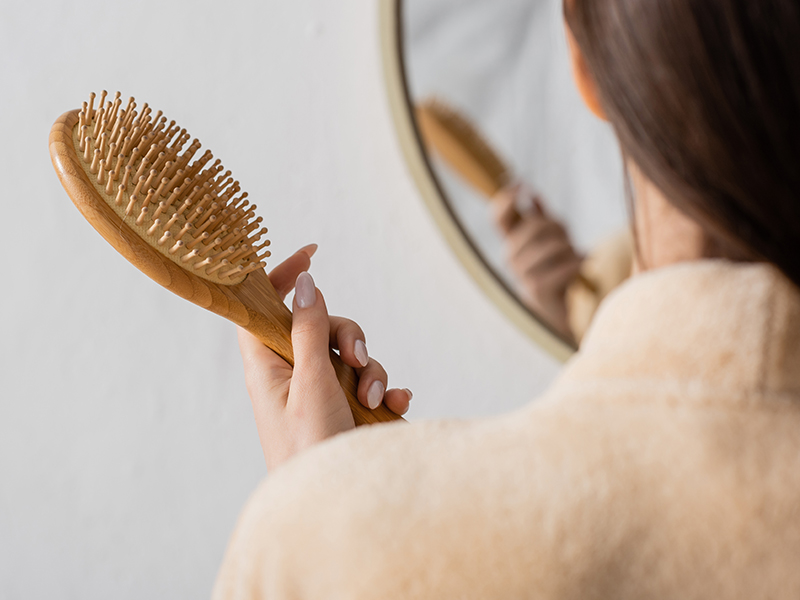

Hair — including eyelashes, eyebrows and body hair — protects the body from environmental factors such as temperature and also helps with how humans feel and sense things.
In addition, people have a lot of their identity wrapped up in hair, said Dr. Kerri Purdy, a dermatologist, division head and associate professor at Dalhousie University in Halifax, during a webinar hosted by Benefits Canada in March. “Having normal hair is a sign of good health for most people and hair loss can impact patients when it comes to their own self-image, how they feel and how people perceive them.”
Read: A closer look at how chronic conditions are impacting benefits plans
Common baldness, or androgenetic alopecia, is due to hormones and genetics, whereas alopecia areata is an autoimmune disorder caused when the immune system attacks hair follicles. In addition to scalp hair loss, it can affect eyebrows, eyelashes, beard or nails.
The majority of patients have classic alopecia areata, which is a variable number and size of circular patches of hair loss on the scalp, face or body. A small percentage have alopecia totalis where they’ve lost all hair on their scalp, or alopecia universalis, where they’ve lost hair everywhere including scalp, eyelashes, eyebrows and body.
Most patients’ onset of alopecia areata is in the first four decades of life and it can be a relapsing and remitting disease with repeated, unpredictable cycles of hair loss and growth. The younger a patient is afflicted, the more likely alopecia areata will persist throughout their life and those with significant disease are unlikely to have hair regrowth without treatment.
Read: 54% of benefits plan members currently live with at least one chronic condition: survey
Alopecia areata is associated with several comorbidities, with a strong association with atopic dermatitis, another dermatological autoimmune disorder.
The amount of hair loss that a patient experiences is associated with the impact on their psychosocial functioning, Purdy noted. There’s a strong bilateral association between alopecia areata and anxiety and major depressive disorder. Seventy per cent of alopecia areata patients have a lifetime prevalence of a psychiatric disorder and up to 13 per cent have contemplated suicide or had suicidal ideation. Almost two-thirds of people affected by alopecia areata say it has impaired their quality of life and was life changing with a significant impact on personal relationships, stigma, bullying, social isolation and embarrassment, in addition to the financial burden of managing their condition.
Unfortunately, there has been an unmet need for patients with moderate to severe alopecia areata, because existing treatments don’t offer a long-term solution, said Purdy. Often, they’re time consuming and painful and don’t offer a long-term benefit, so patients abandon any type of treatment.
Read: The business case for addressing chronic health issues
Topical treatments and steroid options that aren’t approved by Health Canada for treatment of alopecia areata offer limited results or can’t be tolerated for too long. Some treatments require patients to get scalp injections every four to six weeks which can be painful with limited effectiveness and require frequent time off work. Other solutions, such as camouflage (including wigs), don’t address the condition’s root cause.
There are new dedicated alopecia areata treatments, called selective JAK inhibitors, which are effective for those with inflammatory autoimmune hair loss. The clinical trials for a new therapy called Olumiant (baricitinib) demonstrated effectiveness with a significant proportion of severe alopecia areata patients (those who have lost more than 50 per cent of scalp hair) experiencing almost full hair regrowth, said Purdy. She noted that because common baldness isn’t an autoimmune disease, these treatments wouldn’t be an effective treatment.
Read: Coke Canada expanding coverage for mental-health, family-building benefits
